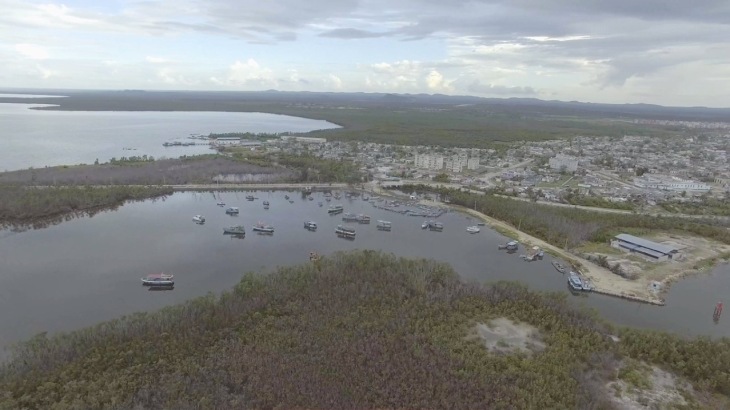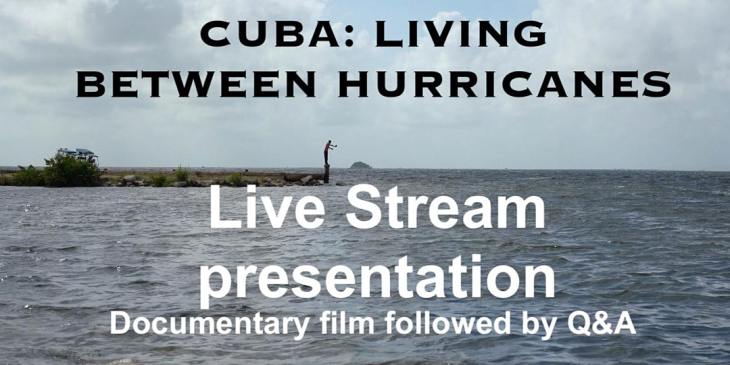
This is a film about the elements – hurricanes and rain, the sea and the earth. About climate, commodities and sustainability.
Catch the special screening of this documentary on 26 July 7pm BST online livestream with Q&A with director Michael Chanan
Hosted by North London Cuba Solidarity Campaign and Sands Films Studio in London
Review of ‘Living between Hurricanes’
[Documentary, Director Michael Chanan, 2020, 70mins]
When the eye of Hurricane Irma passed along the north coast of Cuba making landfall in September 2017 it devastated homes, industry, public buildings and agriculture in its wake. The Cuban civil defence infrastructure is extremely well prepared and worked quickly to evacuate people safely in advance and afterwards to restore power, water, clear the wreckage and rebuild; with relatively little loss of life compared to other countries affected.
In this excellent documentary, British filmmaker Michael Chanan has focussed on one very old town on that north coast, Caibarién, to tell the urgent story of the effects of climate change on the island by examining the links between the ecology, economic development, and social and political history of the place. He interviews ecologists, meteorologists, historians, agronomists, politicians and other clear headed witnesses. He also uses footage from Cuban news reels of past climate disasters and even footage from classic feature films to illustrate and punctuate the points made, revealing his deep understanding of Cuban revolutionary cinema.
Caibarién is not far from the oldest Spanish colonial settlement on the island, Remedios. For the Spanish rulers the effects of hurricanes on their slavery-based economic investments were never far from their minds. They found sugar recovered more easily from extreme weather than coffee or tobacco crops so the Caibarién area became devoted to sugar plantations and factories, the owners became rich on the sugar export boom and a wealthy white bourgeoisie emerged. The sugar market crashed in the 1930s, and the town became a fishing port.
Meanwhile, by 1959 the local soil had been destroyed by sugar, the waters polluted, and the sandy beaches almost lost altogether due to the sea walls having been removed to create apartheid-style beaches – one for the poor, one for black people, one for the rich white people. The environmental experts in the film testify that, in addition to the manmade damage, Irma was evidence that Cuba’s hurricanes are becoming more intense, with higher tides and rising sea levels seen along that coast.
So what is Cuba’s solution? Fidel Castro’s speech at the UN conference on environment and development in 1992 marked the launch of eco tourism to help economically develop places outside the usual tourism sites, while facing climate change requiring innovation in local housing, food production and energy. The community of Las Terrazas is one model. Fernando Funes who runs Finca Marta, a model sustainable farm near Havana, talks about the need to rethink agriculture and apply local technical knowledge to resist the weather.
For Caibarién it is more complicated, as it is one of the 20 top places at risk of losing its coastline, but it is in a process of bringing together public policy, ecology, economic need and tourism and this film is a very thoughtful examination of that process.
Review in CubaSi magazine Spring 2020
The film can be viewed online at livingbetweenhurricanes.org
Catch the special screening of this documentary on 26 July 7pm BST online livestream with Q&A with director Michael Chanan
Hosted by North London Cuba Solidarity Campaign and Sands Cinema in London


You must be logged in to post a comment.